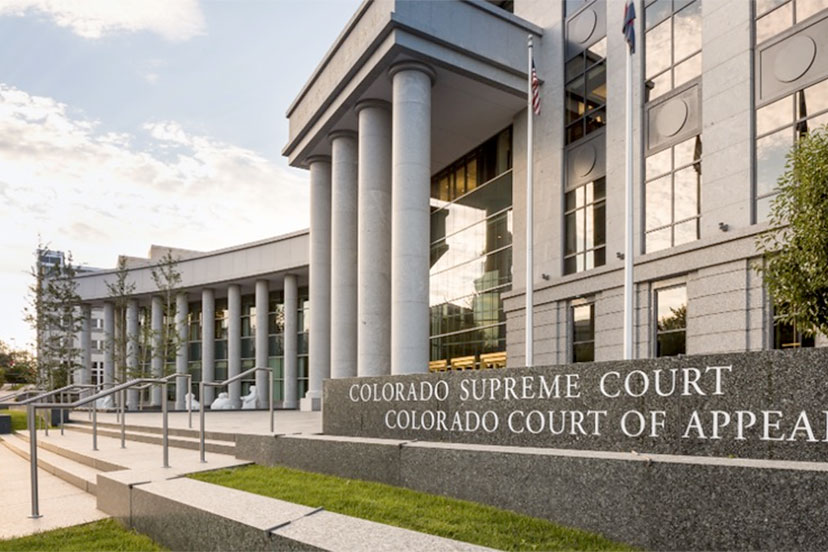You know, money
Money changes everything…
— from ‘Money Changes Everything’ sung by Cyndi Lauper, 1984. Written by Tom Gray.
I offered a little anecdote, yesterday, about a San Juan Water Conservancy District board member speculating, following a Monday board meeting, about whether Lake Hatcher is normally “full-to-overflowing” in January, as it is reportedly doing this year…
…and if it’s not normally “full-to-overflowing” in January, whether that can be seen as evidence that our San Juan Mountains snowpack is melting at a time of year when, perhaps, it ought not be melting…
…which, if true, that fact could he held out as further evidence of Climate Change…
…which, if true, might serve to validate the campaign by San Juan Water Conservancy District (SJWCD) to prevent the sale of the Running Iron Ranch, where the Dry Gulch Reservoir has been in the planning stages since at least 2003, but is no closer to breaking ground that it was 20 years ago…
As our regular Daily Post readers are no doubt well aware, the Running Iron Ranch is owned jointly by SJWCD and Pagosa Area Water and Sanitation District (PAWSD). SJWCD was formed by voter approval in 1987 with the express purpose of building reservoirs in Archuleta County. PAWSD was formed in the early 1970s with the express purpose of delivering safe drinking water (and sanitation services) to Pagosa Lakes subdivisions… and eventually, to almost all residential neighborhoods in Archuleta County.
It’s an easy thing to speculate about how Climate Change might affect the water resources in Archuleta County in the future. You don’t need much actual information or data to fuel your speculation. One could, for example, base one’s speculation on the simple fact that Lake Hatcher is spilling on January 6, 2025, without knowing anything about whether that’s a normal situation, or not.
Disclosure: I currently serve as a volunteer PAWSD board member, but this editorial reflects only my own opinions and not necessarily the opinions of the PAWSD board or staff.
But there is another type of “speculation” that takes place in the world of Colorado water rights, and in the world of Colorado water policy, and in the world of Colorado water infrastructure… and the state of Colorado has attempted to regulate control this type of “speculation” with an “anti-speculation doctrine.”
According to the Colorado constitution, water is a public resource, owned by the public, and cannot be privately possessed. Water must be used only for beneficial uses, and must not be sold for private profit. From the Colorado State University website:
In the 1860s, Colorado adopted a set of laws regarding water use and land ownership known as the Colorado Doctrine. This doctrine established four essential principles of the state’s water law that helped distinguish it from Riparian Law, which is the water law framework commonly followed in wetter, humid portions of the U.S. where there is less concern for reduction of overall flows…
- The state’s surface and groundwater is a public resource for beneficial use by public agencies, private persons and entities;
- A water right is a right to use a portion of the public’s water supply;
- Water rights owners may build facilities on the lands of others to divert, extract, or move water from a stream or aquifer to its place of use;
- Water rights owners may use streams and aquifers for the transportation and storage of water.
The ‘Prior Appropriation Doctrine’ gives priority — when water flows are insufficient to serve all users of a water source — to the water rights holder who first put the water “to beneficial use”,
In reality, however, the “first in time, first in right” doctrine that guides the assignment of Colorado water rights has the virtual effect of making water — in some instances — into a saleable commodity. In a region like Colorado where there’s not enough water to consistently serve all users, it becomes a competition to seek water rights for more water than you actually need or can justify, which is exactly what PAWSD and SJWCD tried to do in 2004.
The state’s “anti-speculation doctrine” is an attempt to minimize that effect.
Colorado Supreme Court justice Greg Hobbs — who passed away in 2021 — was one of the primary architects and interpreters of modern Colorado water law and doctrines. In 2013, he wrote a 59-page summary of the legal principles guiding the state’s approach to protecting this public resource. You can download it here.
He dedicates eight pages (pages 132-140) to two Supreme Court cases dealing with “speculation” by municipal governments. The chapter bears this title:
Pagosa I and Pagosa II: Restraining Municipal Monopolization of the Remaining Unappropriated Water
You can download that chapter here.
The Dry Gulch Reservoir was argued before the Colorado Supreme Court — twice — and the proposed water rights were rejected — twice — by Chief Justice Hobbs and his Court.
The water rights sought by PAWSD and SJWCD in 2004 were, in my opinion, obscene. The two districts wanted rights to fill a future 35,000 acre-foot reservoir, and argued that this amount would be needed 100 years in the future, based on 100 years of growing population and water demand.
At the time of the 2004 application, PAWSD was selling 1,200 acre-feet of water annually, to a population of about 10,000 residents.
The Supreme Court rejected the idea that a municipal water district could estimate its water demand 100 years in the future, with no reasonable explanation of where, exactly, an additional 150,000 people would find places to build their homes. In the Supreme Court’s opinion, PAWSD and SJWCD were engaging in “water speculation”… trying to claim water rights for which they had no ethical justification… in a state where water has become “over-allocated”.
Thus, “Pagosa I” and “Pagosa II” became known as key examples of municipal water districts attempting to obtain “speculative” water rights — rights to more water than they could ever hope to use — and the Court used the opportunity to refine and clarify the state’s “anti-speculation doctrine.”
In Part One, I described the 2004 Dry Gulch Reservoir proposal as a ‘boondoggle’. If you read between the lines of the 2009 Colorado Supreme Court decision, “Pagosa II”, the Court described the proposal in similarly disapproving terms.
Is the Dry Gulch Reservoir still a ‘boondoggle’?
Or has Climate Change changed everything?

